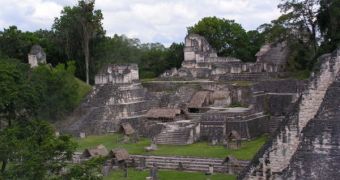Central America was home to the Maya Civilization for more than 1,200 years. A vibrant culture, the Mayans lived in cities so densely packed, that they resembled modern-day metropolises such as Los Angeles. The civilization peaked around 900 AD, when everything seemed to be going well. All of a sudden, their culture and, indeed, themselves, disappeared, hinting at one of the worst demographic disasters in the history of the world. Now, experts believe they may have found a reason why.
Veteran archaeologist Tom Sever seems to believe that the Mayans did it to themselves. PhD student Robert Griffin explains, “The Maya are often depicted as people who lived in complete harmony with their environment. But like many other cultures before and after them, they ended up deforesting and destroying their landscape in efforts to eke out a living in hard times.” The NASA-funded investigation revealed that a large drought had ensued in the age when records point that the civilization began to crumble and disappear, PhysOrg reports.
In spite of their reputation, archaeological evidence convinced experts that the Maya Civilization in fact deforested large swaths of land near their settlements, for three main reasons: to make way for more farm lands, so as to grow corn for an ever-expanding population; to obtain firewood; and for construction materials. “They had to burn 20 trees to heat the limestone for making just 1 square meter of the lime plaster they used to build their tremendous temples, reservoirs, and monuments,” Sever adds.
The team resorted to computer models in order to get a better picture of what the effects of deforestation might have been. “We modeled the worst and best case scenarios: 100 percent deforestation in the Maya area and no deforestation. The results were eye opening. Loss of all the trees caused a 3-5 degree rise in temperature and a 20-30 percent decrease in rainfall,” the expert says. “We believe that drought was realized differently in different areas. We propose that increases in temperature and decreases in rainfall brought on by localized deforestation caused serious enough problems to push some but not all city-states over the edge,” Griffin adds.
Sever notes the important contribution that NASA played in this research, by sharing that, “By interpreting infrared satellite data, we've located hundreds of old and abandoned cities not previously known to exist. The Maya used lime plaster as foundations to build their great cities filled with ornate temples, observatories, and pyramids. Over hundreds of years, the lime seeped into the soil. As a result, the vegetation around the ruins looks distinctive in infrared to this day. Space technology is revolutionizing archeology. We're using it to learn about the plight of ancients in order to avoid a similar fate today.”

 14 DAY TRIAL //
14 DAY TRIAL //